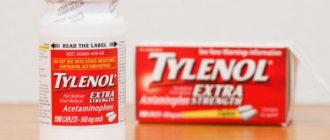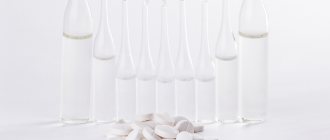Home | About us | Delivery | Advertisers | Login | Registration
Delivery on Sundays and holidays does not work!
- Medicines
- dietary supplementsVitamins
- Categories from A to Z
- Brands from A to Z
- Products from A to Z
- Medical equipment
- beauty
- Child
- Care
- Honey products appointments
- Herbs and herbal teas
- Medical nutrition
- Journey
- Making medicinesStock
Pharmacy online is the best pharmacy in Almaty, delivering medicines to Almaty. An online pharmacy or online pharmacy provides the following types of services: delivery of medicines, medicines to your home. Online pharmacy Almaty or online pharmacy Almaty delivers medicines to your home, as well as home delivery of medicines in Almaty.
my basket
Apteka84.kz is an online pharmacy that offers its customers medicines, medicinal and decorative cosmetics, dietary supplements, vitamins, baby food, intimate products for adults, medical equipment and thousands of other medical and cosmetic products at low prices. All data presented on the Apteka84.kz website is for informational purposes only and is not a substitute for professional medical care. Apteka84.kz strongly recommends that you carefully read the instructions for use contained in each package of medicines and other products. If you currently have any symptoms of the disease, you should seek help from a doctor. You should always tell your doctor or pharmacist about all the medicines you take. If you feel you need further help, please consult your local pharmacist or contact our GP online or by telephone.
© 2021 Pharmacy 84.
Hydrocortisone + Natamycin + Neomycin (ointment)
Dosage form
Ointment for external use
Composition per 1 g:
Active ingredients
: hydrocortisone (in the form of hydrocortisone acetate) – 10 mg, natamycin – 10 mg, neomycin (in the form of neomycin sulfate) – 3500 IU.
Excipients
: liquid paraffin – 927.67 mg, polyethylene – 48.83 mg.
Description
The ointment is white to yellow.
Pharmacotherapeutic group
Topical glucocorticoid + antibiotic – aminoglycoside + antifungal agent.
ATX code
: D07CA01
Pharmacological properties
Pharmacodynamics
A combined drug that has antibacterial, antifungal, local anti-inflammatory effects.
Neomycin is a broad-spectrum antibiotic from the group of aminoglycosides, active against a number of gram-positive (Staphylococcus spp., Enterococcus spp.) and gram-negative (Klebsielia spp., Proteus spp., Escherichia coli, etc.) bacteria.
Natamycin is a polyene antifungal drug that has a fungicidal effect against yeast and yeast-like fungi, especially Candida spp. Dermatomycetes are less sensitive to natamycin.
Hydrocortisone has anti-inflammatory and vasoconstrictor effects. Eliminates inflammation and itching that accompany various types of dermatoses.
Pharmacokinetics
Natamycin and neomycin are practically not absorbed through intact skin and mucous membranes. Absorption of neomycin through damaged skin is possible if the drug comes into contact with wounds or ulcers. From 1 to 3% of hydrocortisone is absorbed through intact skin; with dermatitis, the amount of absorbed hydrocortisone increases by 2 times; with infectious skin lesions it can increase up to 5 times. In children, the absorption of hydrocortisone through intact skin is higher than in adults; the degree of absorption of the drug into the systemic circulation decreases with age.
Indications for use
Dermatoses amenable to glucocorticosteroid therapy, complicated by secondary bacterial and/or fungal infection (especially caused by fungi of the genus Candida).
Contraindications
- hypersensitivity to the components of the drug.
- skin tuberculosis, skin manifestations of syphilis, viral skin infections, skin post-vaccination reactions, open wounds, ulcers.
- acne, rosacea, ichthyosis.
- anogenital itching, skin tumors.
Carefully
Use with caution for tuberculosis (systemic damage).
In children under 1 year of age.
In patients with a history of indications of damage to the IX pair of cranial nerves due to the use of aminoglycosides.
In the presence of perforation of the tympanic membrane and direct exposure of the middle ear to neomycin, there is a risk of ototoxicity.
Use during pregnancy and breastfeeding
When prescribing the drug during pregnancy, it is necessary to take into account the theoretical risk of the ototoxic effect of neomycin, and therefore the drug should not be used for a long time and should not be applied under occlusive dressings.
Before use, if you are pregnant, or think you might be pregnant, or are planning a pregnancy, or while breastfeeding, you should consult your doctor.
Directions for use and doses
For adults and children, the drug is applied to the affected areas of the skin 2-4 times a day. The duration of treatment is determined individually, taking into account the nature of the disease; the course of treatment usually does not exceed 14 days.
In children, the drug should be applied to limited areas of the skin, and do not use occlusive dressings. If there is no improvement in the condition in children and adults after 14 days, you should consult a doctor.
The ointment is intended for the treatment of subacute and chronic dermatoses, especially in the presence of severe dry skin, lichenification, seborrhea, or in cases where the occlusive properties of the ointment are necessary.
The ointment is intended for the treatment of subacute and chronic dermatoses, especially in the presence of severe dry skin, lichenification, seborrhea, or in cases where the occlusive properties of the ointment are necessary. Use the drug only according to the indications, method of administration and in the doses indicated in the instructions.
Side effect
Side effects with external use of Natamycin + Neomycin + Hydrocortisone, as with the use of other glucocorticosteroids, develop rarely and are reversible:
- Rarely, a hypersensitivity reaction (itching, burning, redness or dry skin) may develop;
- Extremely rare - atrophy and thinning of the skin, telantiectasia, striae, purpura, rosacea-like and perioral dermatitis, delayed wound healing, depigmentation, hypertrichosis, withdrawal syndrome after cessation of treatment;
- When using external glucocorticosteroids for a long time, over large areas of skin, or when using occlusive dressings, especially in children, side effects characteristic of systemic glucocorticosteroids may develop, such as suppression of adrenal function;
- Contact dermatitis to neomycin.
If you experience the side effects listed in the instructions, or they get worse, or you notice any other side effects not listed in the instructions, tell your doctor.
Overdose
There is no information about an overdose of the drug. There is a theoretical possibility of an ototoxic effect of neomycin if the drug is applied to the area of the external auditory canal in the presence of perforation of the eardrum and direct exposure of the middle ear to neomycin.
Interaction with other drugs
No drug interactions have been described.
Cross-hypersensitivity may occur between neomycin and drugs of similar chemical structure, for example, kanamycin, paromomycin, gentamicin, and cross-resistance between neomycin and other aminoglycoside antibiotics.
special instructions
When applying Hydrocortisone + Natamycin + Neomycin to the eyelid and periorbital area, there is a risk of increased intraocular pressure and the development of cataracts. When using the drug on large surfaces in children or under bandages, it is necessary to keep in mind the possibility of suppressing the function of the hypothalamic-pituitary-adrenal system.
In the case of prolonged treatment, in the presence of wounds and ulcers, there is a theoretical risk of ototoxic and nephrotic effects of neomycin.
If superinfection or excessive fungal growth occurs, discontinue use of the drug and take appropriate measures.
Impact on the ability to drive vehicles and machinery
Does not affect the ability to drive vehicles or machinery.
Release form
Ointment for external use, 1% + 1% + 3,500 U/g.
15, 20, 25, 30, 35, 40, 50 g in aluminum or plastic tubes, treated with epoxy varnish, closed with an aluminum membrane and a screw-on polyethylene cap with a device for puncturing the membrane.
1 tube along with instructions for use in a cardboard box.
Storage conditions
At a temperature not higher than 25 °C.
Keep out of the reach of children.
Best before date
5 years. Do not use after the expiration date.
Vacation conditions
Available without a prescription.
Neomycin
Stylab / Catalog / Antibacterial drugs / Neomycin
STYLAB offers test systems for the determination of neomycin in milk and milk powder, honey, meat and other animal tissues, serum and blood plasma, as well as in urine by ELISA.
| Enzyme-linked immunosorbent assay (ELISA), strip plate | 5111NEO Neomycin ELISA |
| Antibacterial standards | Pure substances and aminoglycoside standards for analysis in accordance with GOST 32798-2014 |
Neomycin is a broad-spectrum antibiotic from the aminoglycoside group, which also includes gentamicin . It is a mixture of three substances. Even though this antibiotic was discovered in 1949, it is still used today because bacteria slowly develop resistance to it.
Neomycin is poorly absorbed when taken orally, so it is used to treat diseases of the gastrointestinal tract, such as enteritis and dysentery, and in preparation for operations on the gastrointestinal tract. However, more often it is used externally to treat wound infections, furunculosis, eczema and conjunctivitis. When applied to a large surface or damaged skin, neomycin is absorbed into the blood.
Neomycin is able to cross the placental barrier, and during pregnancy this antibiotic is used only for health reasons. Neomycin is ototoxic (causes hearing loss), neurotoxic and nephrotoxic. Other side effects include blood disorders, allergic reactions, nausea and vomiting. In addition, neomycin inhibits intestinal microflora.
In the Russian Federation and the countries of the Customs Union, the maximum permissible levels of neomycin in food products are specified in the “Unified Sanitary-Epidemiological and Hygienic Requirements for Goods Subject to Sanitary and Hygienic Supervision (Control).” According to them, the neomycin content in meat should not exceed 0.5 mg/kg, in milk – 1.5 mg/kg. Current standards can be found using the compact24.com
To analyze neomycin in food products, it is convenient to use ELISA test systems. They allow you to get results within 1 hour, do not require expensive equipment and are easy to use.
Literature
- Neomycin: instructions, use and formula. Radar website.
- NEOMYCIN (addendum). WHO FOOD ADDITIVES SERIES: 51.
- Carman RJ, Simon MA, Petzold HE 3rd, Wimmer RF, Batra MR, Fernández AH, Miller MA, Bartholomew M. Antibiotics in the human food chain: establishing no effect levels of tetracycline, neomycin, and erythromycin using a chemostat model of the human colonic microflora. Regul Toxicol Pharmacol. 2005 Nov;43(2):168-80. Epub 2005 Aug 29.
←Return
Neomycin sulfate
Indications for use
Treatment and prevention of gastrointestinal diseases of young farm animals, incl. birds, colibacillosis, salmonellosis, gastroenterocolitis of bacterial etiology.
Composition and release form
NEOMYCIN SULFATE is a drug in powder form for the treatment of bacterial infections of the gastrointestinal tract of young farm animals, including birds, with an activity of at least 680 mcg/mg (calculated on dry matter). NEOMYCIN SULFATE is a yellowish-white to light brown powder, easily soluble in water, packaged in 50; 100; 200; 330; 500; 1000; 5000 and 10000 g in double polyethylene bags, polyethylene coated paper bags, plastic cans or plastic buckets.
Pharmacological properties
NEOMYCIN SULPHATE is a broad-spectrum antibiotic from the aminoglycoside group, effective against many gram-positive and gram-negative microorganisms, including Escherichia coli, Salmonella spp., Proteus spp., Staphylococcus spp., Corinebacterium spp., Listeria spp. and Bacillus anthracis. Protozoa, fungi and most strains of Pseudomonas aeruginosa are resistant to NEOMYCIN SULPHATE. The antibiotic has a bactericidal effect by disrupting protein synthesis on the ribosomes of the microbial cell.
When administered orally, NEOMYCIN SULFATE is practically not absorbed and has an antibacterial effect mainly in the gastrointestinal tract. It is excreted from the body mainly with feces and partly with urine. NEOMYCIN SULPHATE, in terms of the degree of impact on the body in accordance with GOST 12.1.007-76, belongs to hazard class 3 (moderately hazardous substances).
Dosage regimen
NEOMYCIN SULFATE is administered orally in a mixture with food or water (milk) 2-3 times a day at a daily dose of 10-20 mg per 1 kg of animal weight for 3-7 days.
Contraindications
The use of NEOMYCIN SULFATE is prohibited in case of severe damage to the liver and kidneys, as well as in case of individual hypersensitivity of animals to aminoglycosides.
The use of NEOMYCIN SULFATE simultaneously with other aminoglycoside antibiotics (streptomycin, kanamycin, gentamicin, apramycin) is not allowed due to a possible increase in toxic effect.
special instructions
The slaughter of animals, including birds, for meat is permitted no earlier than 7 days after the end of use of the drug. The meat of animals forcedly killed before the established deadline can be used as feed for fur-bearing animals.
Storage conditions and periods
Store in a dry place, protected from direct sunlight, at a temperature from 0 ° C to 25 ° C. Shelf life, subject to storage conditions, is 3 years from the date of manufacture.
Barcode
Can 330 g - 4606306000520 /4810956000094
Bucket 5 kg - 4606306002425 / 4810956001916
Neomycin with dexamethasone
The simultaneous use of other aminoglycosides is not allowed.
Corticosteroids may reduce resistance to bacterial, viral or fungal infections, as well as promote their development; may mask clinical signs of infection, making it difficult to timely detect the ineffectiveness of an antibiotic or suppress hypersensitivity reactions to the components of the drug. In patients with persistent corneal ulceration who have taken or are taking corticosteroids, the possibility of a fungal infection cannot be excluded. If a fungal infection is confirmed, treatment with corticosteroids should be discontinued.
When topical corticosteroids are used for diseases that cause thinning of the cornea or sclera, perforation is possible.
Corticosteroids applied topically to the eye may slow the healing of corneal wounds.
To avoid the risk of developing corneal herpetic lesions, it is necessary to frequently evaluate the patient using slit-lamp biomicroscopy.
Long-term use can lead to increased intraocular pressure with subsequent damage to the optic nerve, decreased visual acuity and fields, and the formation of posterior subcapsular cataracts. When using the drug for more than 10 days, it is necessary to monitor intraocular pressure.
For acute purulent eye infections, corticosteroids may worsen or mask symptoms.
During treatment with Neomycin with dexamethasone, wearing soft contact lenses is prohibited. When using hard lenses, they should be removed before instillation and put back on 15-20 minutes after instillation of the drug.
Pregnancy and lactation
The safety and effectiveness of this drug during pregnancy have not been established.
The drug is not recommended for use during pregnancy.
There is no reliable data on whether the active components of the drug pass into breast milk after topical application.
Since systemic corticosteroids and aminoglycosides pass into breast milk, a risk to the nursing infant cannot be excluded.
When prescribing the drug, it is necessary to make an informed decision about interrupting breastfeeding or stopping it (abstaining from treatment with the drug, taking into account the benefits/risks of breastfeeding for the child and the benefits of treatment for the woman).
Use in pediatrics
There are no data on the effectiveness and safety of the drug in children and adolescents.
Impact on the ability to drive vehicles and operate machinery
If the patient’s vision clarity temporarily decreases after using the drug, then until it is restored, it is not recommended to drive a car or engage in other activities that require a high concentration of attention and speed of psychomotor reactions.


